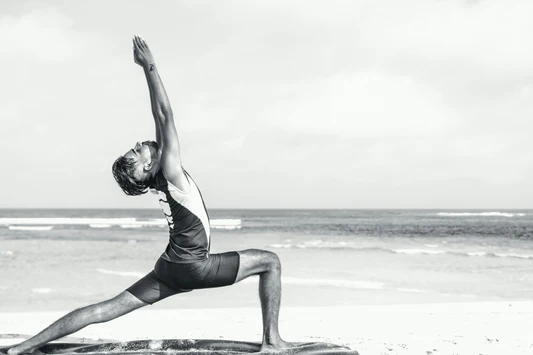
Since the release of our training plans, there have been a TON of requests for a nutrition plan. We’d love to give everyone a comprehensive nutrition strategy. However, nutrition plans get very personal and require some serious fine tuning, so we can’t just go, “Hey, here’s a plan. Enjoy.” The best nutrition plan is one personalized to your individual needs and appeals to your individual tastes.
An old proverb goes, “give a man a fish, and you feed him for a day; teach a man to fish, and you feed him for a lifetime.” Today, we’re going to teach you to fish… for a nutrition plan.
Step 1.
Determine the Amount of Energy (Calories) You Need to Consume Each Day

Use the charts below to find your estimated Basal Metabolic Rate based on your Sex, Age, Height, and Weight. Write it down. Your Basal Metabolic Rate, or BMR, is how many Calories your body uses just to stay alive in a rested state. Yes, it looks low. We’re going to increase it in step 2!








Step 2.
Transform your BMR into Your Daily Energy (Calorie) Target

Did you write down your BMR? Good! Now, think about the number of training sessions you have each week and locate it in the left-hand column in the table below. IMPORTANT. If you have sessions lasting 3 or more hours, count them as 2 training sessions. If you have sessions lasting 5 or more hours, count them as 3 sessions. If you have sessions lasting 8 or more hours, take a rest dammit!!!!!
More seriously, if you are simulating a race and exercising that long, it’s safe to assume that it does not occur on a weekly basis. On that particular day, adjust your nutrition as you would on race day. Not sure what to eat on race day? We have an article for that too!

Step 3.
Figure Out Amounts of Carbohydrate and Protein

Now that Calories are squared away, we have to figure out how we are going to get those Calories. Carbohydrate, Protein, and Fat (and alcohol) are how humans obtain Calories (Energy). Carbs and protein have 4 Calories per gram, fat has 9 Calories per gram, and alcohol has 7 Calories per gram. Write that down.
Okay, check out the next table. Find your average training duration as hours per day.

Great! The next thing you’re going to do is multiply the corresponding middle column and right-hand column number by your bodyweight in kilograms (pounds divided by 2.2). This is the number of grams of carbohydrate and protein that you should be eating each day. Did you write it down?
Step 4.
Calculate Your Daily Amount of Fat (and/or Alcohol)

The next step involves some subtraction. Don’t worry, we’re not taking away the Calories that we just gave you! You know your Daily Energy Target, and you know your amounts of daily carbohydrate and protein. Multiply each by 4 to ascertain their Caloric value. Then, subtract your carb Calories and your protein Calories from your Daily Energy Target. The resulting value is the amount of Calories you have left for fat (and/or alcohol).
DET – ((carbs*4) + (protein*4)) = fat (and/or alcohol) Calories
On that subject, we have to make sure it’s apparent that alcohol is only beneficial for health/cognition/performance up to 1 serving per day. 1. One. Uno. We’re sorry. We wish it were higher too.
Since that’s taken care of… one standard US drink contains about 14 grams of alcohol. Did you know that 14 grams of alcohol has 98 Calories? You should, if you’ve been writing everything down. If you’re opting-in on an alcohol budget, subtract 98 from your fat and alcohol Calories (or some multiple of 98 if you’re going to snub our one drink advice).
Afterwards, the only Calories left are for fat. Divide the number by 9, and you have your daily fat intake in grams.
Step 5.
Logging Your Food

Yes, you will have to monitor your diet. Otherwise, what is the point?! Websites and smartphone apps like www.myfitnesspal.com are very helpful for this, but the first time you log in a new food make sure the info is correct! We also recommend a food scale. Give it a few weeks, and you will be a pro!
We also recommend planning meals ahead of time, instead of just winging it every day. That being said, we’ve been doing this long enough to know that, sometimes, you just have to wing it, and that’s okay. Here are a bunch of tips for all scenarios:
- Portion your Carbs, Proteins, and Fats out into thirds throughout the day. This way, if you eat a typical breakfast, lunch, and dinner, you know that you need to have 1/3rd of your food in after each meal. It will prevent you from getting halfway through the day and having already eaten all the food you were supposed to for the whole day or getting to dinner and realizing you have 2000 Calories left!
- These are some healthy options that are mostly composed of carbs in case you need a lot of those but very little else. Whole grain bread, potatoes, yams, rice, whole grain pasta, quinoa, oatmeal, and fruit.
- Proteins can be easily obtained without much carbohydrate or fat from meat, fish, some dairy, and egg whites. Leaner options control the amount of fat you eat. For example, chicken breasts versus drumsticks. Vegan options will all carry more considerable amounts of fat and/or carbohydrate, so they are not necessarily “pure” sources of protein from this perspective.
-
Pure sources of fat are oils, butter, and lard. Foods like nuts, egg yolks, and bone marrow are also predominantly fat. Try eating some of these if your fat intake is too low.
-
Don't forget to eat your veggies and whole grains! As an indicator of quality food choices, look for 14g of fiber per 1000 Calories.
Step 6.
Evaluation and Adjustment

This advice is for athletic purposes only. It is not intended to be a weight-loss diet! Although, if that was what you wanted, and you’ve already written down all the calculations, subtract 500 Calories from your DET and repeat Steps 3 and 4, then read this article, and you’re all set.
Pick one morning each week to weigh yourself to see if you’re gaining or losing weight. Your weight should NOT be changing, but this will tell you whether or not you need to increase or decrease your Daily Energy Target. If you’re gaining weight, but you don’t want to, reduce your DET by 100-200 Calories per day, and weigh-in next week. If you’re losing weight, but you don’t want to, do the opposite.
On that note, if you’re feeling weak or weighed down, you may also want to increase or decrease your DET by 100-200 Calories until you get it dialed in just right. Of course, you should go through all the steps again if you have a big change in your training plan.
That’s it! Try out the program, and let us know if you have questions or feedback in the comments! This nutrition plan is primarily for endurance sports. If you are a crossfit athlete or other sport with a greater weightlifting component, much of it is the same, but you will likely have different protein and carbohydrate intakes (OCR athletes looking to gain a little muscle, go ahead and stick to higher protein amounts [1.6-2.2 g/kg body weight], it's an easy gram-for-gram exchange with carbs!). Stay tuned to the website for future nutrition plan releases.
Related Articles:


